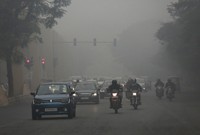Advertisement
Grab your lab coat. Let's get started
Welcome!
Welcome!
Create an account below to get 6 C&EN articles per month, receive newsletters and more - all free.
It seems this is your first time logging in online. Please enter the following information to continue.
As an ACS member you automatically get access to this site. All we need is few more details to create your reading experience.
Not you? Sign in with a different account.
Not you? Sign in with a different account.
ERROR 1
ERROR 1
ERROR 2
ERROR 2
ERROR 2
ERROR 2
ERROR 2
Password and Confirm password must match.
If you have an ACS member number, please enter it here so we can link this account to your membership. (optional)
ERROR 2
ACS values your privacy. By submitting your information, you are gaining access to C&EN and subscribing to our weekly newsletter. We use the information you provide to make your reading experience better, and we will never sell your data to third party members.
Environment
Sunlight Releases NOx From Urban Grime
ACS Meeting News: The filthy film may be an unexpected source of the smog-forming compounds
by Michael Torrice
August 24, 2015
| A version of this story appeared in
Volume 93, Issue 33
A grimy film covers the streets, statues, and buildings in our cities. Chemists reported that, when hit with sunlight, this urban grime may release nitrogen oxides (NOx), which produce ozone and smog. Understanding how this chemical film contributes to NOx levels in cities could help environmental scientists produce better models of air quality. Through previous laboratory studies, D. James Donaldson of the University of Toronto had studied how light can trigger unique photochemistry in urban grime to release nitrates, possibly as NOx. To determine if the chemistry happens in cities, he ran a field study in Leipzig, Germany. He and colleagues set up trays of glass beads on a rooftop: Some sat in the shade, and others sat in direct sunlight. Beads that sat in the light had 10% lower nitrate levels than those in the shade. To understand the fate of the lost nitrates, the scientists went back to the lab and put grime-covered glass particles inside a photoreactor. The team observed that NOx was one of the gases released from the illuminated grime.





Join the conversation
Contact the reporter
Submit a Letter to the Editor for publication
Engage with us on Twitter